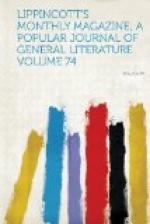[Illustration: EARL OF SURREY.]
We scan what was once embraced in Windsor Forest, where the Norman laid his broad palm on a space a hundred and twenty miles round, and, like the lion in the fable of the hunting-party, informed his subjects that that was his share. The domain dwindled, as did other royal appurtenances. Yet in 1807 the circuit was as much as seventy-seven miles. In 1789 it embraced sixty thousand acres. The process of contraction has since been accelerated, and but little remains outside of the Great and Little Parks. Several villages of little note stand upon it. Of these Wokingham has the distinction of an ancient hostelry yclept the Rose; and the celebrity of the Rose is a beautiful daughter of the landlord of a century and a half ago. This lady missed her proper fame by the blunder of a merry party of poets who one evening encircled the mahogany of her papa. It was as “fast” a festivity as such names as Gay and Swift could make it. Their combined efforts resulted in the burlesque of Molly Mog. These two and some others contributed each a verse in honor of the fair waiter. But they mistook her name, and the crown fell upon the less charming brow of her sister, whose cognomen was depraved from Mary into Molly. Wiclif’s Oak is pointed out as a corner of the old forest, a long way east of the park. Under its still spreading branches that forerunner of Luther is said to have preached. Messrs. Moody and Sankey should have sought inspiration under its shade.
In the vast assemblage of the arboreal commonwealth that carpets the landscape the centuries are represented one with another. It is a leafy parliament that has never been dissolved or prorogued. One hoary member is coeval with the Confessor. Another sheltered William Rufus, tired from the chase. Under another gathered recruits bound with Coeur de Lion for the Holy Land. Against the bole of this was set up a practicing butt for the clothyard shafts that won Agincourt, and beneath that bivouacked the pickets of Cromwell. As we look down upon their topmost leaves there floats, high above our own level, “darkly painted on the crimson sky,” a member, not so old, of another commonwealth quite as ancient that has flourished among their branches from time immemorial. There flaps the solitary heron to the evening tryst of his tribe. Where is the hawk? Will he not rise from some fair wrist among the gay troop we see cantering across yonder glade? Only the addition of that little gray speck circling into the blue is needed to round off our illusion. But it comes not. In place of it comes a spirt of steam from the railway viaduct, and the whistle of an engine. Froissart is five hundred years dead again, and we turn to Bradshaw.
[Illustration: WINDSOR CASTLE, FROM BISHOPSGATE.]




